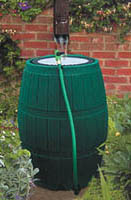I think I mostly loved the “idea” of church; a sense of community, respect for all, the concept of a Good Samaritan. I even lived by most of the Ten Commandments. But I knew I wouldn’t be getting married, seeing my kids christened, or having a family pew, so I eventually withdrew, sadly feeling like an outsider and a fake.
Flash forward three decades or so, to a couple of Sundays ago. With our friend Sherry in town from 
Doing the course of this, our first taste of 21st century church-life in St. Thomas, I realized just how times have changed; my mom re-introduced me to many folks I knew 25 years ago, and introduced “his partner Robin”. She is now asking, possibly simply expecting, of her church what the church has asked of her all these years; “so in everything, do to others what you would have them do to you” (Matthew 7:12).
And you know what? So far, so good. Maybe we’ll drop in again.
























